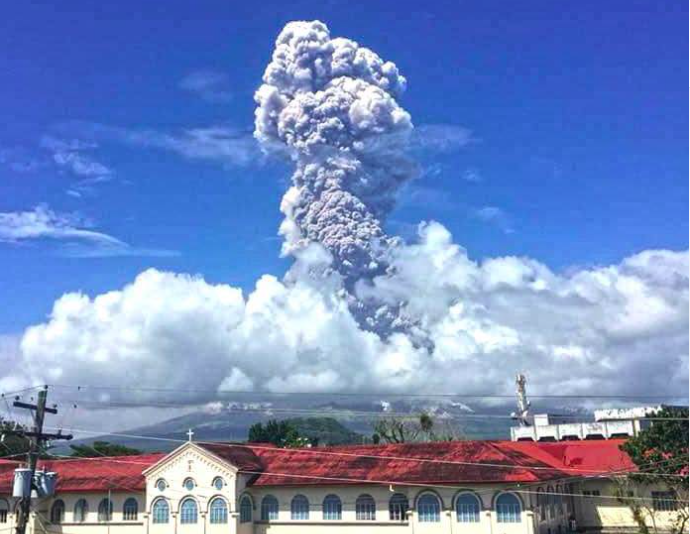
Mount Mayon has sent a huge plume of ash and steam 10 kilometres into the sky, prompting respiratory health warnings.
The alert level has been raised to four, on a scale of five, meaning that an explosive eruption is possible within hours or days.
The noontime explosion today (Monday, January 22) sent superheated lava, molten rocks and steam cascading down Mount Mayon’s slopes and shrouded nearby villages in darkness, said Renato Solidum, chief of the Philippine Institute of Seismology and Volcanology (Phivolcs).
The danger zone around the volcano has now been was extended to eight kilometres (five miles) from the crater.
“If the eruption is vertical, it’s possible pyroclastic flows or pyroclastic density currents may cascade down in all directions,” Mr Solidum said.
More than 27,000 villagers have fled since Mayon started looking restless on January 14.
Philippine Red Cross Chairman Richard Gordon has urged people near the volcano to wear face masks and remain alert for other health hazards.
He said: “We urge the affected individuals to wear dust masks or anything to cover their nose and mouth to protect themselves from catching harmful emissions from the volcanic ash.
“We also advise the residents to report immediately to their local health centres and nearest Red Cross chapter in case of health concerns from volcanic ash.”
Exposure to falling ash can cause a variety of respiratory problems such as nose and throat irritation, coughing, bronchitis-like illness, and discomfort while breathing. Eye irritation and minor skin problems are also among the possible effects of exposure.
According to the Department of Health in Bicol, 516 evacuees have already been diagnosed with respiratory tract infection. They are all said to be stable condition.
Classes were suspended in all levels in Albay today and Legazpi Airport has been closed.
Mount Mayon has erupted about 50 times in the last 500 years, sometimes violently.
In 2013, an ash eruption killed five climbers who had ventured near the summit despite warnings. Mayon’s first recorded eruption was in 1616 and the most destructive, in 1814, killed 1,200 people and buried the town of Cagsawa in volcanic mud.
The Philippines lies in the so-called “Ring of Fire,” a line of seismic faults surrounding the Pacific Ocean where earthquakes and volcanic activity are common.
In 1991, Mount Pinatubo, near Angeles City, exploded in one of the biggest volcanic eruptions of the 20th century, killing about 800 people.
https://www.facebook.com/legazpicity/videos/10156164095677340/
